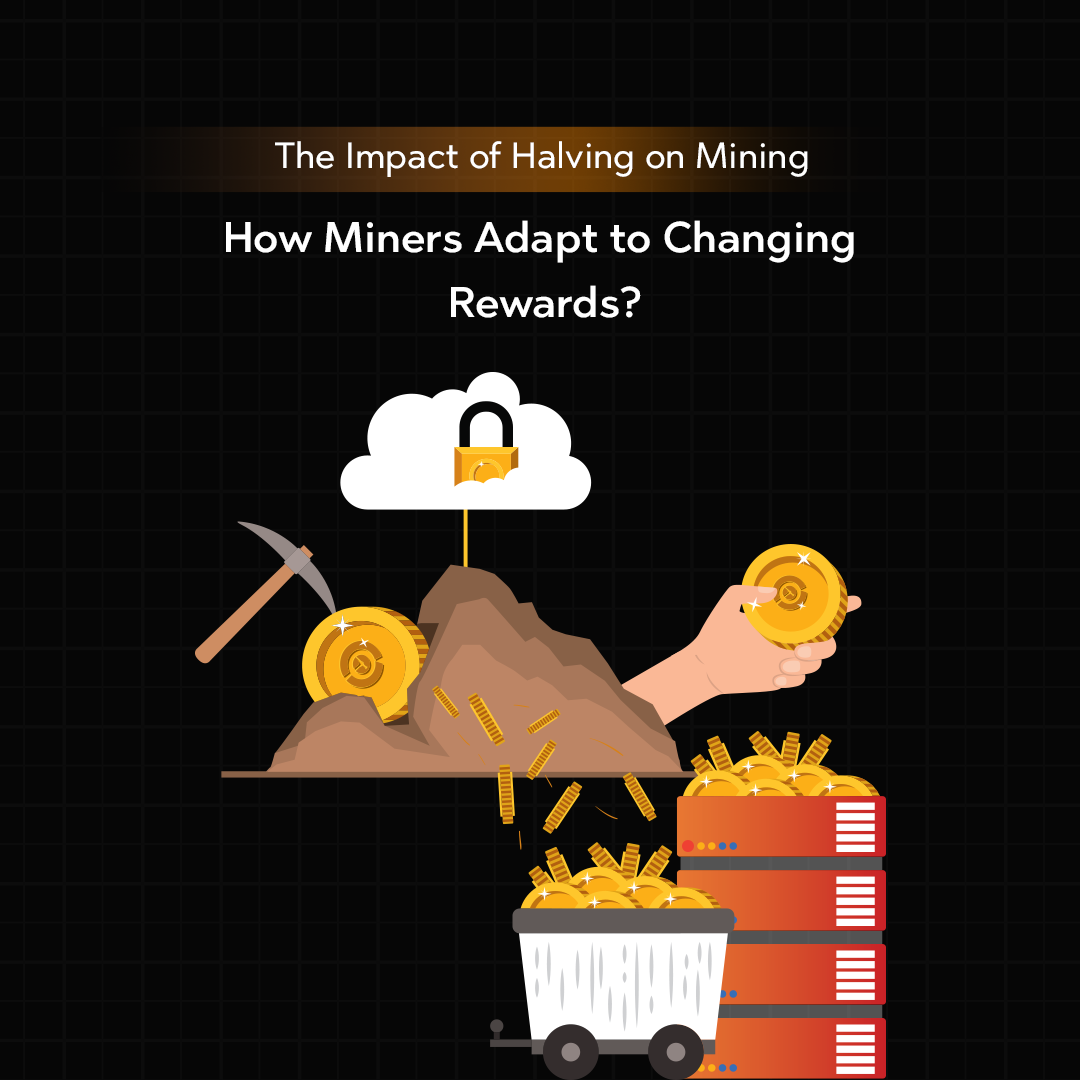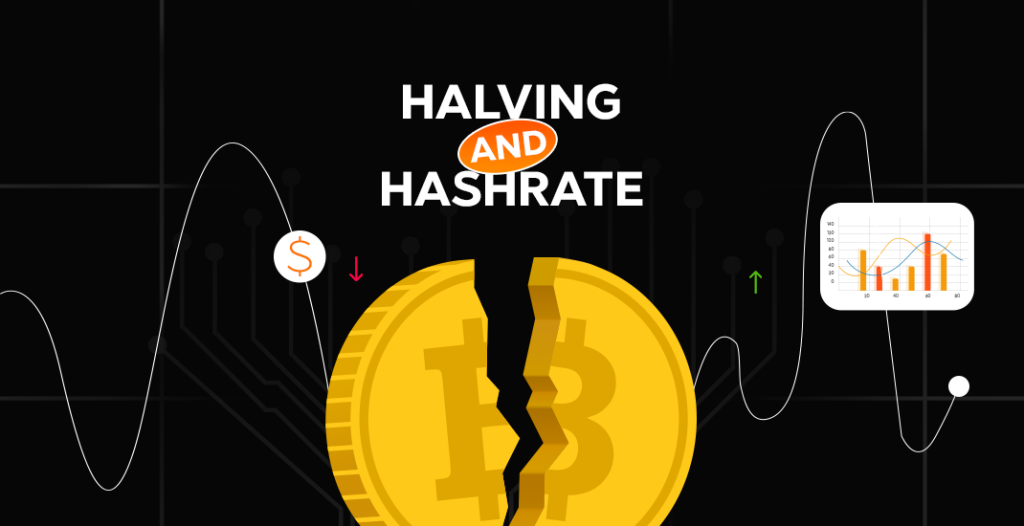
Halving Effects on Mining | How Miners Adapt to Changing Rewards?
Only a few events garner as much attention and anticipation as the halving in the crypto world. This reduction in mining rewards has significant consequences for miners, profitability, and the overall health of a blockchain network. The halving event, which occurs at regular intervals, is akin to a clock ticking in the world of crypto, marking significant milestones for cryptocurrencies like Bitcoin and, more recently, Qitcoin (QTC).
Join us as we explore how halving events affect mining, including the money miners make and the strength of the network. Plus, we’ll talk about Qitcoin’s (QTC) first halving cycle, just around the corner.
Understanding Halving in Cryptocurrency
Halving is a critical event in the life of a cryptocurrency, and it occurs at regular intervals, typically every four years. It involves cutting the rewards miners receive for validating transactions and adding them to the blockchain. The idea behind this reduction is to control inflation and ensure the scarcity of the cryptocurrency.
During these halving events, cryptocurrency networks undergo a process that resembles the adjustment of a finely tuned instrument. The reduction in mining rewards is designed to maintain scarcity, control inflation, and ensure the longevity of the cryptocurrency. But, like any well-designed machine, this adjustment affects various components of the crypto ecosystem.
Halving Effects on Mining

- Reduced Mining Rewards
One of the most direct impacts of halving on mining is the reduction in mining rewards. For instance, in the case of Bitcoin, the reward started at 50 BTC per block and was halved to 25 BTC in 2012, 12.5 BTC in 2016, and 6.25 BTC in 2020. This sharp reduction in rewards can significantly affect the profitability of miners.
As the rewards decrease, miners have to find new ways to maintain their profitability. They must either increase their operational efficiency or explore alternative revenue streams.
- Challenges for Small Miners
Halving can be particularly challenging for small miners with limited resources. They may struggle to cover their operating costs when the rewards are halved. This situation often leads to increased consolidation in the mining industry, as larger, more well-funded operations can weather the storm.
Miner Profitability

The profitability of miners is a key concern during a halving event. Many miners operate on slim margins, and a sudden reduction in rewards can push them into the red. To adapt to the changing landscape, miners often take the following steps:
- Upgrading Equipment
To maintain profitability, miners might upgrade their hardware to increase their mining efficiency. More powerful mining rigs can process transactions faster and require less energy, making them a smart investment.
Upgrading equipment not only enhances mining efficiency but also keeps miners competitive in the ever-evolving cryptocurrency landscape, where new, more efficient mining technologies are regularly introduced.
- Exploring New Mining Pools
Joining or switching to a more profitable mining pool can make a significant difference. Different pools offer varying rewards structures and fees, so miners may seek out the best fit. When considering a switch or exploring new mining pools, it’s essential for miners to conduct thorough research and compare not only the profitability but also the pool’s reputation, security, and reliability.
Additionally, staying informed about the pool’s policies, such as payment schedules and minimum payout thresholds, can help miners make an informed decision to maximize their earnings while ensuring a smooth and transparent mining experience.
- Diversifying Income Streams
In addition to mining, some miners explore other income streams within the cryptocurrency ecosystem. This may involve staking, providing liquidity to DeFi platforms, or running masternodes. Diversifying income streams in the cryptocurrency space can provide miners with a more stable financial footing and hedge against the volatile nature of mining.
Staking, for example, allows miners to earn passive income by holding and locking up certain cryptocurrencies, while providing liquidity to decentralized finance (DeFi) platforms that can generate fees and interest. Running masternodes offers another avenue for consistent earnings through network maintenance and governance participation, making it an attractive option for those looking to expand their crypto portfolio beyond traditional mining.
Halving and Hashrate

Hashrate is a measure of the processing power of a cryptocurrency network. It is a critical factor in ensuring the security and stability of a blockchain. Hashrate can be influenced by a halving event in several ways:
- Volatility in Hashrate
Halving events often lead to fluctuations in hashrate. Some miners may shut down their operations due to reduced profitability, causing a temporary drop in hashrate. As the network adjusts, the remaining miners see their share of rewards increase, potentially enticing new miners to enter the field.
- Blockchain Security
Hashrate is directly tied to the security of the blockchain. A sudden drop in hashrate can make the network more vulnerable to attacks. To mitigate this risk, some cryptocurrencies have implemented emergency difficulty adjustments to stabilize block generation times.
Qitcoin’s First Halving Cycle
As we explore the impact of halving on mining, it’s important to mention that Qitcoin (QTC) is on the cusp of its first halving cycle. This event will have similar effects on QTC mining as we’ve discussed earlier.
Qitcoin is a relatively new cryptocurrency that has gained a following due to its unique features and strong community support. As its first halving approaches, QTC miners need to prepare for changes in their mining rewards. The QTC community is closely monitoring this event, as it will shape the future of the coin and its mining ecosystem.
To Sum Up
Halving events are pivotal moments in the life of a cryptocurrency. They impact mining rewards, miner profitability, and hashrate, leading miners to adapt to the changing landscape. As Qitcoin’s first halving cycle looms, miners in the QTC ecosystem are getting ready to face the challenges and opportunities that come with reduced rewards.
To stay competitive in the ever-evolving world of cryptocurrency, miners must be agile, resourceful, and forward-thinking. Whether it’s upgrading equipment, exploring new income streams, or participating in the QTC halving, adaptation is the key to long-term success in mining.
As the Qitcoin community gears up for its first halving, the crypto world watches with great interest, eager to see how miners and the network will adapt to this significant change. The world of cryptocurrency is ever-evolving, and miners are at the forefront, driving the innovation that keeps these digital economies running.
